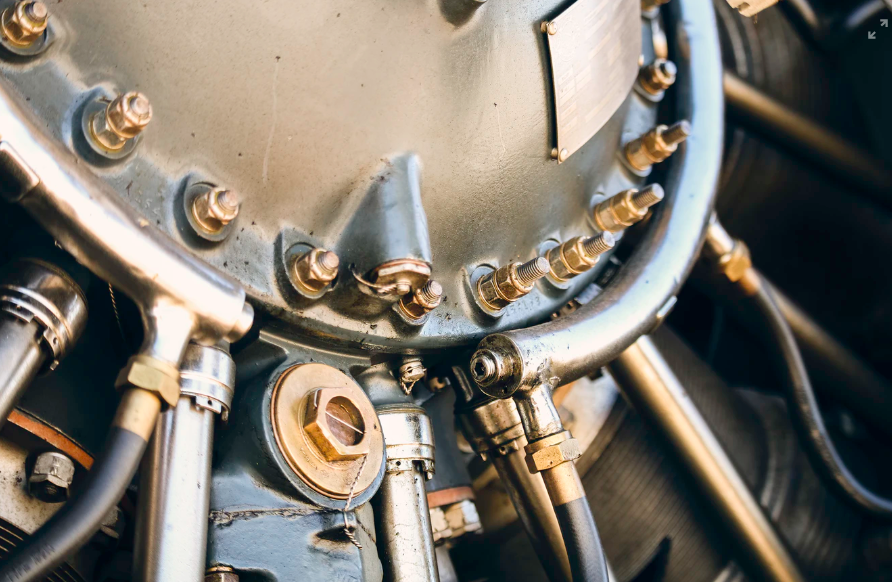What Are The Best Condition Monitoring Methods For Rotating Machinery?
Rotating machinery is a significant component of many systems in manufacturing and process industries, as well as road and air transportation, nuclear power stations, and oil and gas refineries. One of the most common causes of mechanical problems in rotating machinery is the failure of bearings, particularly as a result of inadequate maintenance (such as a lack of lubrication), or component fatigue. Being subjected to unequal forces within the machine can also cause premature failure. The consequences can be significant, rendering vital equipment unsafe or out-of-action, leading to lengthy downtime and lost revenue.

How Vibration Monitoring Can Identify Bearings Faults
Faults in rotating machinery are best identified by vibration monitoring, which plays a crucial role in detecting defects long before a complex or expensive breakdown occurs. When vibration analysis is used, the timely identification of faults reduces equipment downtime, prevents damage to other components, and lengthens the lifespan of the machinery, while even flaws that are invisible to the naked eye and inaudible to the ear can be detected.
Rotating components create a distinctive or unique level and pattern of vibration, producing a consistent and regular flow of energy. If that flow is interrupted, excessive shaking or noise can occur, indicating a developing problem with the equipment. Analytics are vital to vibration monitoring: although human senses are unable to identify the difference, no two vibrations are identical. Sensors, however, can identify even the subtlest changes and, with a machine’s vibration history – its vibration signature – documented by analytics, changes can be quickly detected.
Vibration sensors are central to the process. Mounted on or within the machinery, they acquire a full-spectrum vibration signature – vertical, horizontal, and axial – at low to medium frequencies, calculating the vibration magnitude (in effect, how smoothly a machine is operating). From the information provided by the analysis, maintenance managers can pinpoint the location of a problem, rather than spending excessive time stripping back the machinery on a lengthy hunt for a fault.
Solutions To Rotating Machinery Faults
At Sensonics Ltd, we can provide four solutions for rotating machinery protection to prevent component failure, drawing on over 40 years’ experience globally.
1) Vibration Monitoring
From small pumps to larger turbines, we can advise on and provide vibration monitoring equipment for rotating machinery. Our experience and knowledge enable us to offer a range of sensing equipment, including proximity, piezoelectric, and magnet or moving coil devices that utilise software algorithms developed explicitly for vibration monitoring.
2) Temperature
A rise in temperature can be another indicator that something is going quite wrong with the condition of your rotating machine. Bearing wear, increased or decreased clearances, insulation breakdown on motor windings, misalignment can also be detected by temperature sensors, whether separate RTDs or thermocouples with or without transmitters, or even as a dual output accelerometer measuring vibration and temperature and these are often fed in the machine protection system to compliment the vibration channels.
3) Overspeed Protection
Necessary for protecting rotating machinery from the failure of speed control systems, shaft overspeed protection can prevent extremely damaging consequences of plant failure. Our overspeed protection systems, which are proven to be reliable over many years, offer up to a SIL-3 integrity level and are suited for machinery systems that need to demonstrate compliance via an overspeed test.
4) Position
a) Non-Contact – For Example Shaft Position
In rotating machinery in which rotors are used for fluid, steam, or gas handling, the position of the shaft or wear of the thrust bearing pads are essential. We provide proximity probes with a sufficient measurement range to allow shaft float and overcome side target interference.
b) Contact - For Example Absolute Thermal Expansion & Valve Position
i) For linear measurements using LVDT displacement transducers on large steam turbines to measure the movement of the turbine pedestals on the cylinder sole plates. It is a relatively easy measurement to make requiring an LVDT mounted on the turbine and the extension rod fixed or sprung onto the slides. When the turbine is coming up to temperature it expands, as it does it it is possible for one side of the sliders to stick whilst the other side continues. In this case the difference in the displacement output from LVDTs mounted on either side of the machine will increase to the point of creating an alarm in the control room because the turbine is “crabbing” and thus allowing an engineer to be deployed to free the sticking pedestal from it’s slider plate.
ii) LVDT’s are also used as valve or actuator position feedback transducers where the signal feedback is sent to the turbine control system so that it knows how far a valve is open or closed. These can be retrofitted on bracketry across the fixed and moving part of a steam valve or in conjunction with the OEM as a high pressure resistant design internally within the actuator.
Together with sensor mounting, signal processing, and calibration, Sensonics Ltd can provide the full service necessary for your business to protect your rotation machinery.
Find Out More
To discuss your requirements with one of our team, please call 01442 953063 today.


